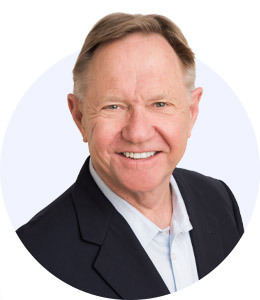I read lots of research. That means I regularly see formulas like N=500 or N=600 or N=1,000. The N stands for number, and the number afterward stands for how many people are included in the data. In essence, for research purposes, the larger the number the better in most cases.
Statistics is very interesting to me. For instance, there is a certain number at which the results are considered reliable. The higher the N, the better the validity. However, after that certain number is reached, adding to the number will not significantly change the results.
On February 23 and 24, I hosted a session called “Replenishing Yourself, Your Team, and Your Organization” (RYTO). We were fortunate to have Katie Boston-Leary, PhD, MBA, MHA, RN, at RYTO. She serves as director of nursing programs at the American Nurses Association overseeing Nursing Practice and Work Environment and Healthy Nurse Healthy Nation, and she shared current research on nursing. It was great to see a large N for the research.
While a large N can be very good, there are times when a small N is better. Recently I had an experience that taught me the value of the formula N=1. It reminds me that every person is unique. Yes, there are commonalities between people; however, no two people are exactly alike
Marcia Horn is CEO of a not-for-profit organization called ICAN. There are quite a few organizations with that name, but you can search “Marcia Horn and ICAN” if you want to learn more. ICAN has become one of the country’s most effective cancer patient advocacy organizations with the mission to accelerate the anticancer drug pipeline at every level. Marcia and her team are recognized and respected for the unique and tenacious patient advocacy offered by ICAN in its Personalized Medicine Cancer Case Navigation Programs, which cover every cancer and cancer subtype and emphasize molecular diagnostics and gene expression profiling.
Marcia has taught me that each patient is unique. While research is very valuable, and ICAN supports it, treatment can vary from patient to patient. Her influence has changed how I look at many things. Recently a person shared with me that a dear friend has been diagnosed with glioblastoma multiforme and had few options. I connected her with Marcia. Here is what she wrote: “No GBM patient should be given up on—everyone is an N of 1.”
I find that this thinking applies to many areas. There is research that shows what makes for an engaged employee, a skilled leader, and a highly satisfied customer. This is valuable information; however, it is important to dig deeper with each individual. One can read that
Generation X, Y, and Z value certain things, or that Baby Boomers feel a certain way. While there are some broad generalizations that may apply, on an individual level, each person is different.
Today I recommend leaders learn from each person what their drivers are. The career development and goals of one individual may vary significantly from someone else their same age. How one person handles stress is different from how another person handles stress. Over the past few months, I’ve taken this new learning, combined it with many other observations, and brought together the ideas of many thought leaders to create resources focused on several different topics.
One of them is employee engagement. Today this is the most important metric to gauge organizational success. Whoever has the best employee engagement—with employee experience at the center of the organizational ecosystem—will win. Whoever has the best middle management team will have the best engagement. And of course, the company that has the best senior executive team will have the best middle management team.
With these truths in mind, here are some recommendations.
- Emphasize career and skill development. Make sure that for each employee, consistent conversations are held to learn what the person’s career goals are. I have found Chipotle is outstanding in this area. Identify skill development opportunities for each person. People will leave an organization if they do not feel they are being invested in.
- Invest in manager development too. With the pandemic, it has been necessary to back off development due to so many managers having to take on direct staffing responsibilities. Unfortunately, since many more-experienced people are leaving, organizations have less-experienced employees filling both manager and frontline roles. Organizations are in a tough position. While they naturally want to increase training, they need to be careful not to overwhelm people. The training must be laser-focused. We are calling this micro-development, meaning small doses of very specific training provided in an easy-to-access manner.
- Implement Relationship Rounding™. The backbone of employee engagement is ongoing communication. Over the years, I have noticed that in some organizations, rounding has moved from a practice of listening and building relationships of trust to more of a transactional “checking a box” exercise. The group of experts I have brought together have focused on this subject and created a great resource on Relationship Rounding. Not only does this practice allow you to build a solid relationship with each person and figure out what they want and need, it helps you identify red flags that could indicate well-being issues. Relationship Rounding is the perfect way to do N=1 research.
I am learning so much from difference makers like Marcia Horn and ICAN. I am grateful for their insights that help guide me and all of us in a rapidly changing world.
We will never go back to the past. Many challenges we face today with recruiting and retaining talent are not new; however, the pandemic has made it impossible to not take increased action. The same is true with well-being.
We must bring 2022 solutions to 2022 challenges. What worked in the past is not good enough. The great news is that those of us who realize this truth and get busy creating employee-centric organizations will enjoy an exciting, successful, and rewarding future.







